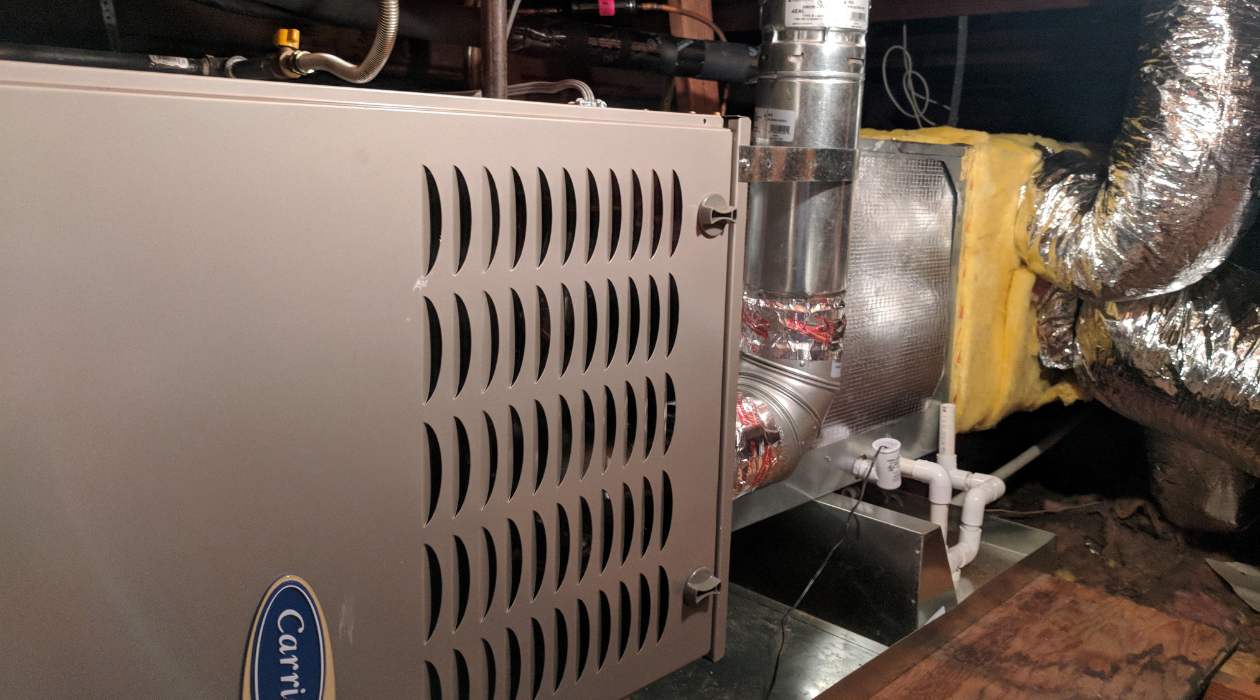

Articles
How To Get Furnace Into The Attic
Modified: February 25, 2024
Learn the steps and precautions for safely moving a furnace into the attic. Our articles provide expert advice on getting your furnace into tight spaces.
(Many of the links in this article redirect to a specific reviewed product. Your purchase of these products through affiliate links helps to generate commission for Storables.com, at no extra cost. Learn more)
Introduction
Bringing a furnace into the attic can be a challenging task that requires careful planning and execution. Whether you are undergoing a home renovation or building a new house, positioning your furnace in the attic can free up valuable space in your basement or utility room, and provide better airflow throughout your home. However, it is important to approach this task with caution to ensure the safety and functionality of your furnace system.
In this article, we will guide you through the process of getting a furnace into the attic. We will discuss the tools and materials you will need, as well as the necessary preparations to create a suitable space for the furnace. We will also cover the steps for disconnecting, moving, securing, and reconnecting the furnace, ensuring that it operates efficiently in its new location. By following these instructions, you can successfully relocate your furnace to the attic and enjoy the benefits of a more efficient and organized heating system.
Key Takeaways:
- Relocating a furnace to the attic requires careful planning, proper tools, and safety precautions. Clearing the space, securing the furnace, and testing its functionality are crucial steps for a successful and efficient relocation process.
- Prioritize safety and proper handling when moving a furnace into the attic. Careful planning, securing the furnace, and thorough testing ensure a smooth and safe transition, providing efficient heating for your home.
Read more: How Do Animals Get In The Attic
Tools and Materials Needed
Before you begin the process of bringing the furnace into the attic, it is important to gather all the necessary tools and materials. Here is a list of items you will need:
- Measuring tape
- Heavy-duty moving straps or ropes
- Furniture dolly
- Screwdrivers
- Adjustable wrench
- Socket set
- Plastic sheeting
- Tarp or drop cloth
- Protective gloves
The measuring tape will come in handy when assessing the dimensions of the attic space and planning the route for moving the furnace. The heavy-duty moving straps or ropes will be used to secure and lift the furnace during the moving process. A furniture dolly will make it easier to maneuver the furnace through tight spaces.
The screwdrivers, adjustable wrench, and socket set will be needed for disconnecting and reconnecting the furnace from the ductwork and electrical connections. It is important to have the proper tools to ensure a safe and successful disconnection and reconnection process.
To protect your attic from any potential damage during the moving process, it is essential to have plastic sheeting, a tarp, or a drop cloth. These materials will serve as a barrier between the furnace and the attic floor, preventing any scratches or dents. Lastly, don’t forget to wear protective gloves to ensure your safety during the entire procedure.
Having these tools and materials on hand will make the task of bringing the furnace into the attic more manageable and help ensure a smooth and efficient relocation process.
Preparing the Attic Space
Before you can bring the furnace into the attic, it is crucial to prepare the space to ensure that it is suitable for housing the heating system. Follow these steps to adequately prepare the attic space:
- Clear out any obstructions: Remove any items, debris, or clutter from the attic to create a clean and clear path for the furnace. This includes boxes, furniture, and any other objects that might obstruct the movement of the furnace or impede its installation.
- Prepare the flooring: Assess the condition of the attic floor and make any necessary repairs or reinforcements. This may involve reinforcing floor joists, adding additional supports, or installing a sturdy platform to support the weight of the furnace. Ensure that the flooring is level and stable before proceeding.
- Check the ventilation: Adequate ventilation is crucial for the safe operation of a furnace. Make sure that the attic has proper ventilation and that there are no obstructions in the ventilation system. If needed, consult with a professional to ensure that the attic space meets ventilation requirements.
- Create an access point: Determine the best location for the furnace in the attic and create an access point to accommodate its size and dimensions. This may involve cutting a hole in the ceiling or creating a dedicated entranceway for the furnace. Take into consideration the proximity to existing ductwork and electrical connections.
- Seal any air leaks: To optimize energy efficiency and prevent conditioned air from escaping, inspect the attic for any air leaks. Seal any gaps, cracks, or openings in the attic walls, floor, and ceiling. This will help maintain a consistent temperature and prevent heat loss.
By properly preparing the attic space before bringing in the furnace, you will ensure that it is a safe and suitable environment for the heating system. Taking the time to clear out obstructions, reinforce the flooring, assess ventilation, create an access point, and seal air leaks will contribute to the successful installation of the furnace in the attic.
Planning the Route
When it comes to moving a furnace into the attic, careful planning of the route is essential to avoid any damage to the furnace or the surrounding areas. Here are some steps to help you plan the best route:
- Measure the dimensions: Measure the width, height, and depth of the furnace to ensure that it will fit through the access point and any narrow spaces along the route. Take into account any sharp turns, staircases, or tight corners that may require additional maneuvering.
- Assess the weight: Determine the weight of the furnace and evaluate the structural integrity of the path you plan to take. Consider factors such as the strength of the floor, the stability of any stairs or ramps, and the weight capacity of any equipment you will be using to transport the furnace.
- Clear the path: Remove any obstacles that may hinder the movement of the furnace. This includes furniture, rugs, cords, and other items that could impede the smooth transportation of the furnace. Clearing the path will minimize the risk of accidents or damage to the furnace or the surrounding area.
- Protect the floors: Lay down protective coverings such as cardboard, plywood, or drop cloths to safeguard the floors throughout the transportation process. This will prevent scratches, scuffs, and other potential damage caused by the movement of the furnace.
- Use proper lifting techniques: If you need to navigate stairs or ramps, ensure that you have a team of individuals who can safely lift and maneuver the furnace using proper lifting techniques. This will mitigate the risk of injury and minimize the chance of dropping the furnace.
- Consider professional assistance: If you feel unsure about safely moving the furnace into the attic or if the furnace is particularly heavy or cumbersome, it may be wise to seek the assistance of professional movers or HVAC technicians who have experience in handling and transporting furnaces.
By carefully planning the route and considering factors such as dimensions, weight, obstacles, floor protection, lifting techniques, and professional assistance, you can ensure a smooth and safe movement of the furnace into the attic. Take your time during the planning stage to mitigate any potential risks and maximize the efficiency of the relocation process.
Disconnecting the Furnace
Prior to moving the furnace into the attic, it is crucial to disconnect it from the existing ductwork and electrical connections. Here are the steps to follow when disconnecting the furnace:
- Turn off the power: Locate the circuit breaker or disconnect switch for the furnace and turn off the power supply. This will ensure your safety while working on the electrical connections.
- Shut off the gas supply: If your furnace operates on natural gas or propane, locate the gas shut-off valve and turn it to the closed position. This will prevent gas leaks and ensure the safety of the disconnection process.
- Remove the access panels: Open the access panels on the furnace to gain access to the internal components. Use a screwdriver or the appropriate tool to remove any screws or fasteners holding the panels in place. Set the panels aside in a safe location.
- Disconnect the electrical connections: Carefully detach the electrical wires connected to the furnace. This may involve unscrewing wire nuts, disconnecting terminal blocks, or unplugging any wiring harnesses. Take note of the wire colors and configurations for reconnection later.
- Disconnect the ductwork: Identify the ductwork connected to the furnace, including the supply and return ducts. Loosen any clamps or fasteners securing the ducts and gently pull them away from the furnace. If necessary, use a utility knife to cut through any foil tape or duct tape.
- Cap the gas line (if applicable): If your furnace is connected to a gas line, cap the gas line to prevent any gas leaks. This can usually be done by using a pipe cap or plug, ensuring a tight and secure fit.
Take caution when handling the electrical connections and gas lines, as improper handling can lead to injury or damage to the furnace. If you are unsure about disconnecting these components, it is advisable to seek the assistance of a professional HVAC technician.
By following these steps to disconnect the furnace from the ductwork and electrical connections, you will be able to safely and correctly prepare the furnace for relocation into the attic.
Consider hiring professionals to safely disassemble the furnace and carefully transport it into the attic. Make sure to measure the attic entrance and the dimensions of the furnace to ensure a proper fit.
Read more: How To Get Rid Of Bats In The Attic
Moving the Furnace
Once the furnace is properly disconnected, it is time to move it into the attic. This process requires careful handling to ensure the safety of both the furnace and the individuals involved. Follow these steps to move the furnace:
- Secure the furnace: Use heavy-duty moving straps or ropes to securely fasten the furnace. Ensure that the straps are tight and that the furnace is stable in order to minimize any movement or potential damage during transportation.
- Use a furniture dolly: Place the furnace on a sturdy furniture dolly to facilitate its movement. Make sure the dolly has secure straps or ropes to hold the furnace in place. This will provide stability and ease in maneuverability throughout the moving process.
- Choose the best path: Carefully navigate the chosen route to the attic, taking into consideration any obstacles, staircases, or turns. It may be necessary to have a team of individuals to assist in guiding and supporting the furnace as it is being moved.
- Take breaks if needed: Moving a furnace into the attic can be physically demanding. If necessary, take breaks during the process to prevent fatigue and ensure the safety of those involved. Remember to prioritize your well-being and ask for additional help if required.
- Watch for clearances: Be mindful of the dimensions of the furnace and ensure that there is ample clearance throughout the route. Check for any low ceilings, narrow doorways, or tight corners that may require extra caution and maneuvering.
- Protect the furnace: As you move the furnace, be conscious of its surroundings and protect it from any potential damage. Avoid bumping it into walls or other objects and take extra care when going through tight spaces or areas with limited visibility.
While moving the furnace, it is crucial to prioritize safety and take precautions to prevent any injuries or damage. Maintain clear communication among the team members and proceed slowly and methodically to ensure a smooth and successful transition into the attic.
If the furnace is particularly heavy or challenging to move, it is recommended to seek professional assistance to ensure the safe relocation of the unit. Professional movers or HVAC technicians will have the expertise and equipment to safely transport the furnace into the attic.
By following these steps and exercising caution throughout the moving process, you can effectively relocate the furnace to its new location in the attic.
Securing the Furnace in the Attic
Once the furnace is successfully moved into the attic, it is essential to secure it in its new location to ensure stability and safety. Properly securing the furnace will prevent any movement or damage during operation. Follow these steps to secure the furnace in the attic:
- Position the furnace: Carefully place the furnace in the designated spot in the attic, aligning it with the access point and ensuring sufficient clearance around the unit.
- Level the furnace: Use a level to ensure that the furnace is sitting evenly on the floor or platform. Adjust as necessary to achieve a stable and level position.
- Anchor the furnace: Secure the furnace to the attic floor or platform using anchor straps or brackets. These will help prevent any possible movement or shifting of the furnace during operation.
- Reconnect the ductwork: Carefully reattach the supply and return ducts to the furnace, ensuring a tight and proper connection. Use foil tape or mastic to seal any gaps and securely fasten any clamps or fasteners.
- Reconnect the electrical connections: Reconnect the electrical wires according to the colors and configurations noted during the disconnection process. Use wire nuts or terminal blocks to secure the connections, ensuring that they are tight and secure.
- Restore the gas supply (if applicable): If the furnace operates on natural gas or propane, reopen the gas shut-off valve to restore the gas supply. Check for any gas leaks by using a gas leak detector or applying a soapy water solution to the connections. Bubbles indicate a leak, and in such cases, the connections should be tightened or repaired by a professional.
It is crucial to follow manufacturer instructions and local building codes when securing the furnace in the attic. These guidelines will ensure that the furnace is properly anchored and connected, and that it meets safety standards and regulations.
Additionally, it may be beneficial to consult with a professional HVAC technician to ensure that the furnace is securely installed and functioning correctly in its new location. They can offer valuable advice and expertise to ensure the safe and efficient operation of the furnace.
By properly securing the furnace in the attic, you can enjoy peace of mind knowing that it is stable, properly connected, and ready to provide efficient heating for your home.
Reconnecting the Furnace
After securing the furnace in the attic, the next step is to reconnect it to the necessary components including the ductwork and electrical connections. Properly reconnecting the furnace is crucial to ensure that it functions efficiently and effectively. Follow these steps to reconnect the furnace:
- Check the ductwork: Inspect the ductwork to ensure it is free from any debris or blockages. Clear any obstructions and confirm that the ducts are properly aligned and connected to the furnace.
- Reconnect the supply and return ducts: Gently align the ducts with the corresponding openings on the furnace and securely fasten them using clamps or fasteners. This will ensure a tight and proper connection to enable smooth airflow throughout the system.
- Reconnect the electrical connections: Refer to the notes taken during the disconnection process to properly reconnect the electrical wires. Make sure the wire colors and configurations match and use wire nuts or terminal blocks to secure the connections. Double-check that all connections are tightened and secure.
- Restore the power: Turn the power back on by flipping the circuit breaker or reconnecting the power supply. Confirm that the furnace has power by checking the display or controls on the unit.
- Test the system: After reconnecting the furnace, test the system to ensure that it is functioning properly. Adjust temperature settings, switch between heating and cooling modes (if applicable), and listen for any unusual noises. Monitor the airflow to verify that it is consistent and producing the desired heating output.
- Double-check for leaks: If your furnace operates on natural gas or propane, conduct a thorough check for any gas leaks. Use a gas leak detector or apply a soapy water solution to the gas connections. If you notice any bubbles forming, make sure to tighten the connections or seek professional assistance to address the issue.
It is important to follow manufacturer instructions and adhere to local building codes when reconnecting the furnace. If you have any doubts or concerns about the reconnection process, it is recommended to consult with a professional HVAC technician for guidance and assistance.
By carefully and properly reconnecting the furnace to the ductwork and electrical connections, you can ensure that it operates efficiently and provides the necessary heating for your home. Regular maintenance and inspections are also recommended to keep the furnace in optimal condition.
Testing the Furnace
Once the furnace is reconnected and powered on, it is essential to test its functionality to ensure that it is operating correctly and providing the desired heating output. Testing the furnace will help identify any potential issues and allow for adjustments to be made if necessary. Here are the steps to test the furnace:
- Set the thermostat: Adjust the thermostat to the desired temperature and heating mode. Ensure that it is set to “heat” and that the temperature setting is higher than the current room temperature.
- Listen for startup: As the furnace starts up, listen for any unusual noises such as rattling, banging, or scraping. While it is normal for some furnaces to make minor noises during startup, any loud or persistent noises should be investigated further.
- Observe the flame: If your furnace has a visible flame, such as in a gas furnace, visually inspect it. The flame should be blue and steady. A yellow or flickering flame may indicate an issue with the combustion process and should be addressed by a professional technician.
- Monitor the airflow: Pay attention to the air coming from the vents. Verify that there is a consistent and strong airflow. Weak or uneven airflow could indicate a blockage or issue with the ductwork and may require further investigation.
- Measure the temperature: Use a thermometer to measure the temperature of the air coming from the vents. Compare it to the temperature set on the thermostat. If the difference is significant, it may suggest a problem with the furnace’s heating efficiency and warrants professional attention.
- Check for any unusual smells: Take note of any strange or strong odors coming from the furnace. A burning smell might indicate dust burning off when starting the furnace for the first time after installation. However, if there is a strong, persistent, or unusual smell, it is advisable to turn off the furnace and consult a professional technician.
- Monitor for consistent heating: Allow the furnace to run for a cycle and monitor if it consistently maintains the desired temperature. If the temperature fluctuates significantly or if the furnace frequently turns on and off, it may indicate a problem that needs to be addressed by a professional technician.
If you encounter any issues or concerns during the testing process, it is recommended to contact a qualified HVAC technician. They have the expertise to diagnose and resolve any problems, ensuring that your furnace is operating safely and efficiently.
Regular maintenance and annual professional inspections are also essential to keep your furnace in optimal condition and maximize its lifespan.
By thoroughly testing the furnace after installation, you can identify and address any issues early on, ensuring that it provides reliable and efficient heating for your home.
Read more: How Do Raccoons Get In The Attic
Conclusion
Bringing a furnace into the attic can be a challenging yet rewarding endeavor. By following the proper steps and precautions, you can successfully relocate your furnace to the attic, freeing up valuable space in your home and improving overall airflow. Here is a recap of the key points discussed in this article:
1. Prepare the attic space: Clear out any obstructions, reinforce the flooring, check ventilation, create an access point, and seal air leaks to ensure a suitable environment for the furnace.
2. Plan the route: Measure the dimensions of the furnace, assess its weight, clear the path, protect floors, use proper lifting techniques, and consider professional assistance if needed.
3. Disconnect the furnace: Turn off power, shut off the gas supply, remove access panels, disconnect electrical connections, disconnect the ductwork, and cap the gas line if applicable.
4. Move the furnace: Secure the furnace with moving straps or ropes, use a furniture dolly for easier maneuverability, choose the best route, take breaks when necessary, watch for clearances, and protect the furnace from any potential damage.
5. Secure the furnace in the attic: Position the furnace, level it, anchor it to the floor or platform, reconnect the ductwork, reconnect the electrical connections, and restore the gas supply if applicable.
6. Reconnect the furnace: Check the ductwork for any blockages, reconnect the supply and return ducts securely, reestablish the electrical connections, restore the power, and test the system.
7. Test the furnace: Set the thermostat, listen for startup noises, observe the flame (if applicable), monitor the airflow, measure the temperature of the air, check for any unusual smells, and ensure consistent heating.
Throughout the entire process, it is crucial to prioritize safety, following manufacturer instructions, and seeking professional assistance when needed. Regular maintenance and inspections will help keep your furnace in optimal condition and ensure its longevity.
By successfully bringing your furnace into the attic, you can create more space in your home and improve the efficiency of your heating system. Enjoy the benefits of a well-planned and properly installed furnace relocation, providing comfort and warmth to your living space.
Frequently Asked Questions about How To Get Furnace Into The Attic
Was this page helpful?
At Storables.com, we guarantee accurate and reliable information. Our content, validated by Expert Board Contributors, is crafted following stringent Editorial Policies. We're committed to providing you with well-researched, expert-backed insights for all your informational needs.

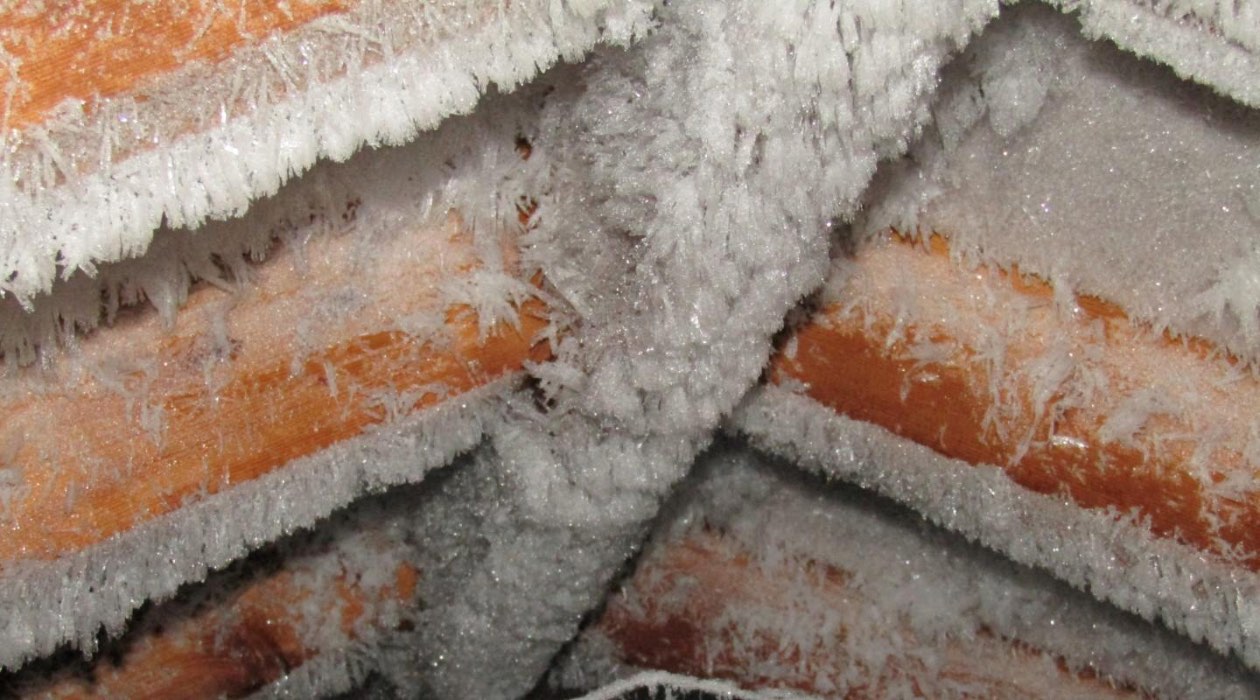


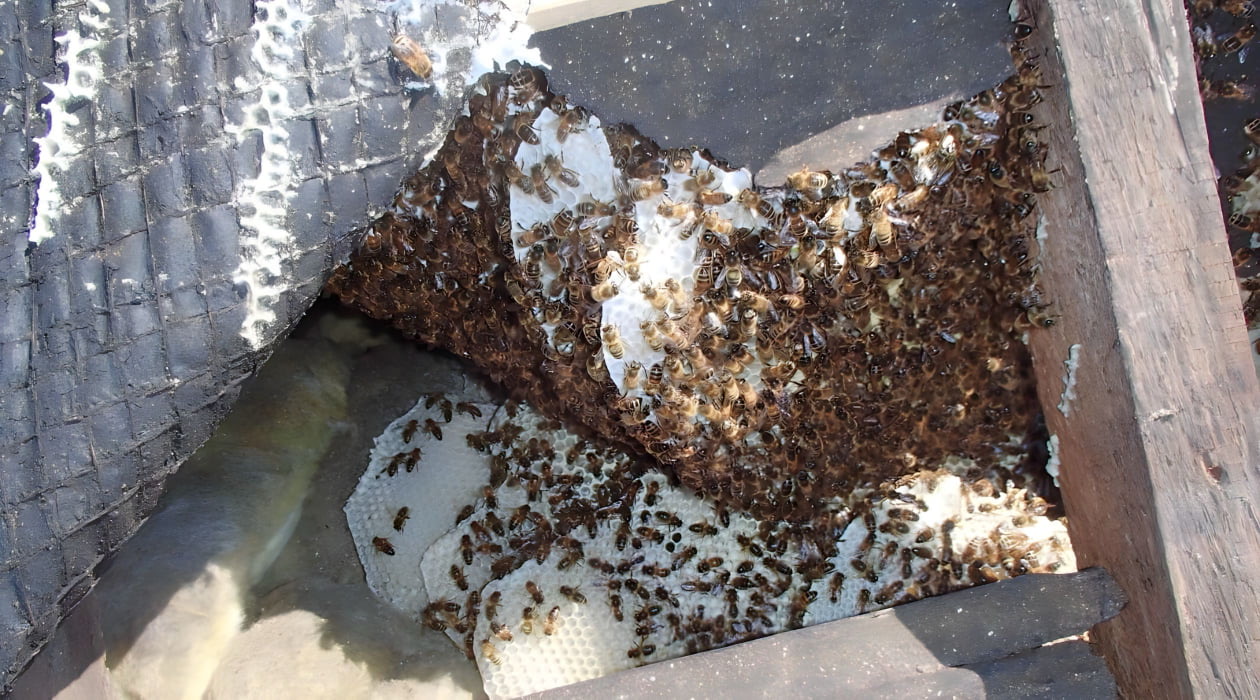
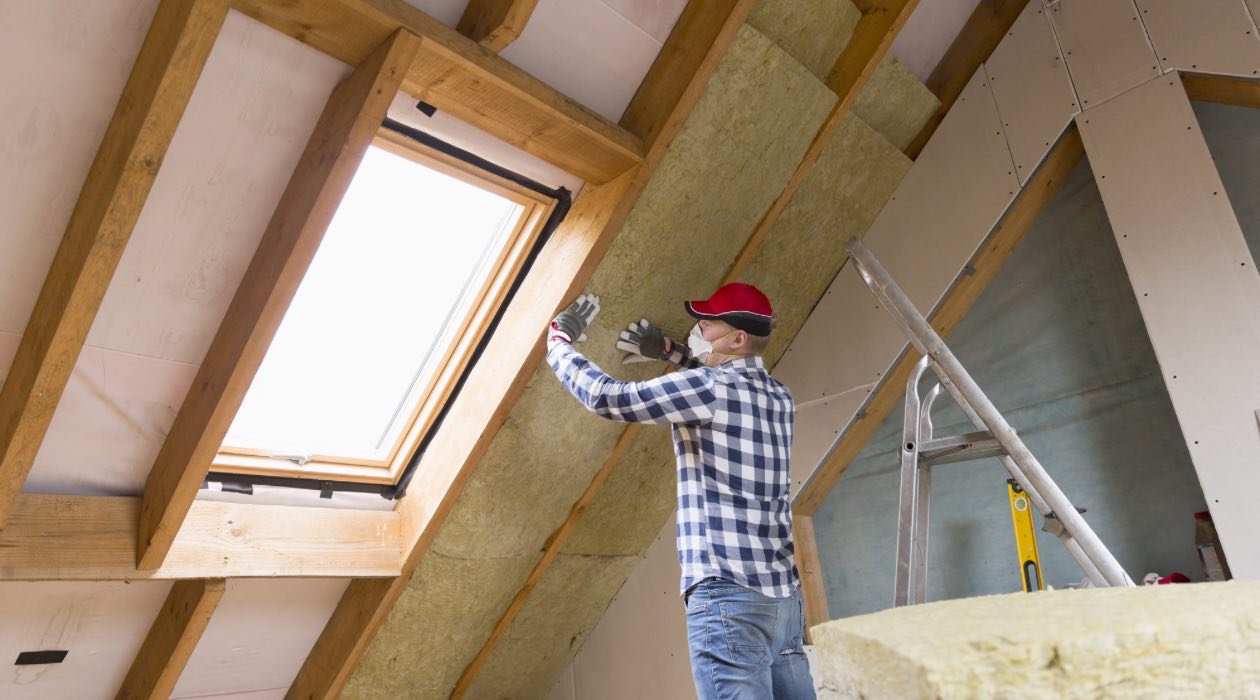





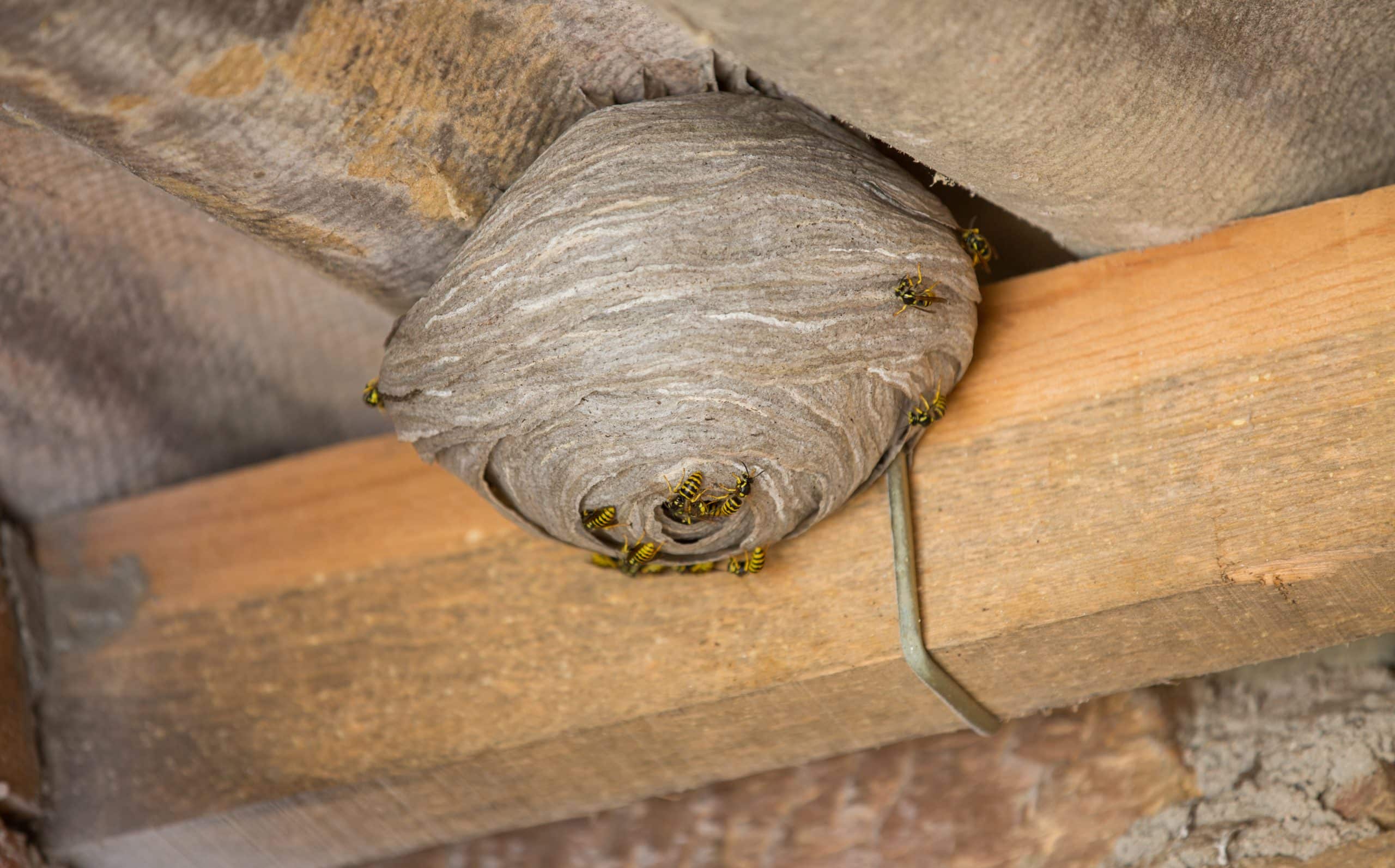


0 thoughts on “How To Get Furnace Into The Attic”